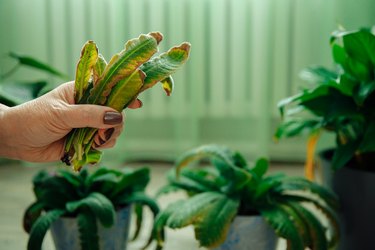The scorching summer months can be hard on your indoor plants. Sunburn, dehydration and stress are just a few of the things your normally lush houseplants are dealing with when the temperatures are on the rise. Give them their best chance of survival with these 10 houseplant hacks and make sure this is their best summer yet.

Video of the Day
1. Keep Your Watering Schedule Consistent
Summer means more time out of the house, whether you're relaxing at the beach or enjoying a hike with your friends. Just don't forget about your lush green roommates. Set a reminder on your phone so you'll never forget to water your plants when you're bouncing between social gatherings. Once a week should be sufficient for most of your houseplants but always feel the soil before you water. If the top 2 to 3 inches are dry, it means they're ready for a drink.
Video of the Day
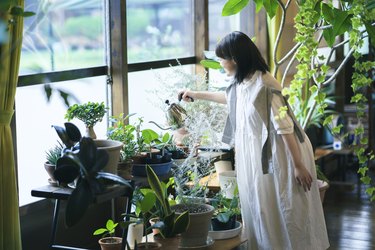
2. Wipe Leaves for Better Absorption
Next time you're cleaning the house, give the leaves of your plants a quick dusting. Use a damp paper towel and gently wipe away any dust on the leaves. This will help the plant absorb light easier, which is essential for growing greenery.

3. Watch Out for the Air Conditioner
When the temperatures rise outside, it means the air conditioner inside your home is working harder. The dry air from your A/C can actually dry out your houseplants, so be sure to pay attention to how close your plants are to any vents. Either move your plants out of the direct flow from the vent or try misting the leaves weekly to increase humidity.

4. Skip the Fertilizer
Don't introduce anything new to your plants' soil when the temperatures are on the rise. If your plant is struggling to make it through the summer heat, the added fertilizer can only stress it out even more. It's better to save this chore for when it's cooler outside.
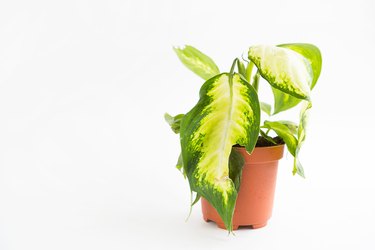
5. Reevaluate Your Plants' Placement
We're not the only ones that can get sunburned in the summer. Your plants can actually get burned from the extra bright rays too. Since you can't slather them in sunscreen, it's best to move them a bit further into your house or away from the windowsill during the especially hot days of summer.
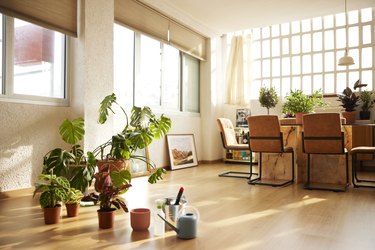
6. Avoid Repotting
Your houseplants already have enough to deal with, from the bright summer sun to the extra-dry air from the constantly running A/C, so it's best to save your plants the added stress and avoid repotting during the summer months. While repotting is necessary maintenance that will need to be done for your plants' health, even the most gentle gardener will inevitably damage some leaves and roots during the process.
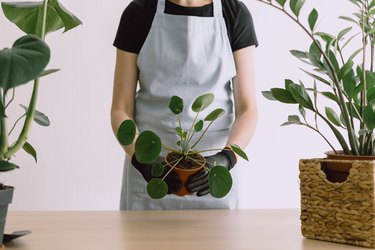
7. Be on the Lookout for Stress Signals
Wilted and yellowing leaves, dropped flowers and brown patches — these are all signs that your houseplant is stressed. The quicker you notice these changes in your plant, the easier it will be to remedy the situation. Pay close attention to your plants' appearance and you'll be able to adjust their placement, watering schedule or anything else your plant may be asking.
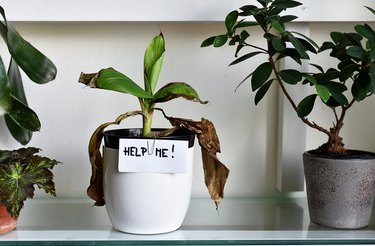
8. Water Thoroughly
This is not the time when you can just add a couple drops of water to your plants and call it a day. When watering your plants, you should water them slowly, making sure every inch of soil gets the moisture it needs for survival. Adding water too quickly will result in most of it running over the sides of the soil and not penetrating down toward the deeper roots.

9. Make a Travel Plan
If you have summer travel plans, make sure you also factor in your houseplants. Find a friend you trust to stop by and give your plants a drink and open the blinds or turn on the lights if you'll be gone for more than a few days. There are also slow-watering devices that you can stick in the soil that will water them a little bit every day. Either way, just don't forget them or you could return from vacation to a house full of wilted and unhappy plants.
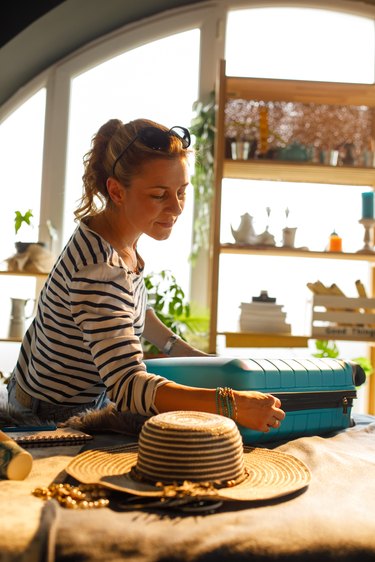
10. Prune Often
Every leaf on your plant has a life cycle and will only live for so long. Say goodbye to any leaves with yellow or brown spots and increase your plants' chance to live their best life. Plants will naturally spend much-needed energy and nutrients trying to restore these damaged leaves, so it's best to prune them to promote new growth.
